Facts about Tunisia! Tunisia is known for its Roman ruins and the start of the Arab Spring, but there is much more to the country than that. Tourists are attracted by the beautiful Tunisian coastline, the enchanting Sahara Desert, charming cities, golf, wines, ceramics, thalassotherapy and much more.
Innehållsförteckning
Facts about Tunisia
Tunisia has a rich and varied history with influences from the Phoenicians, the Roman Empire and the Byzantines. This North African country, with its capital Tunis, borders Algeria and Libya and has a long coastline on the Mediterranean Sea. Before travelling to the country, it is useful to know some facts about Tunisia.
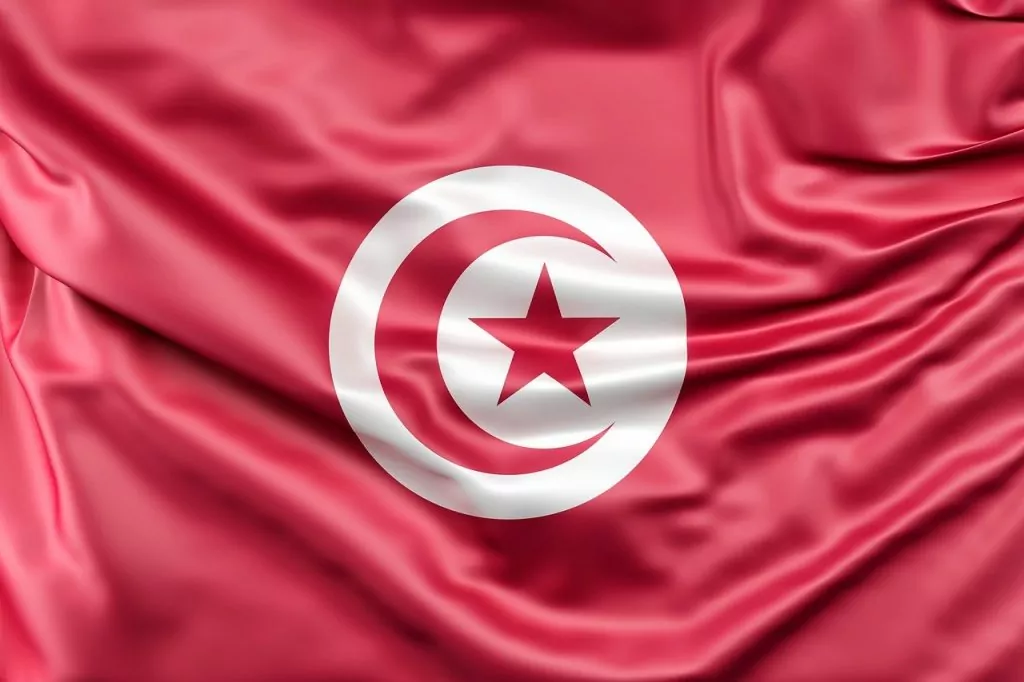
1. Tunisia has Stone Age artefacts in Kebili
Fossilised animal bones and tools dating back to the Stone Age have been discovered in the town of Kebili. Scientists believe that these artefacts are around 200 000 years old. The bones found at the site indicate that Tunisia had a very different animal life from what we see today, with much greater biodiversity. This is partly because Tunisia used to have a green and more humid landscape, which created a more favourable environment for many animal species.
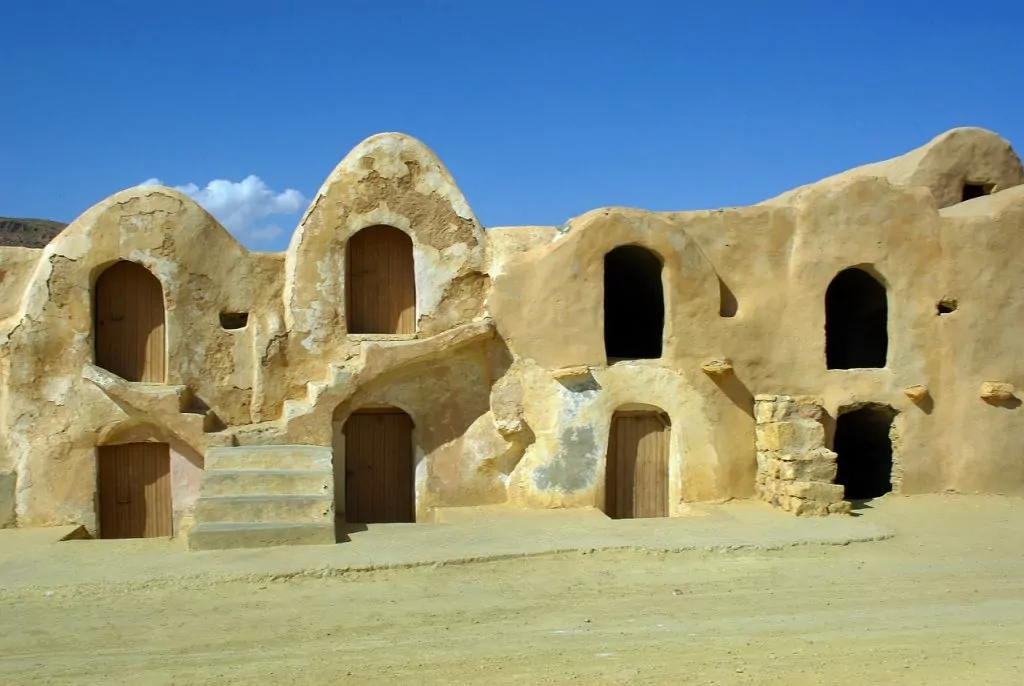
2. Kairouan is considered the fourth most important city in Islam.
The city of Kairouan was founded in 670 AD and is a UNESCO World Heritage Site. The city is home to the impressive Kairouan Mosque and also the so-called 'Mosque of Three Doors', both of which are important symbols of the city's historical and cultural significance. In fact, the city is considered by many to be the fourth holiest city in Islam, after Mecca, Medina and Jerusalem.
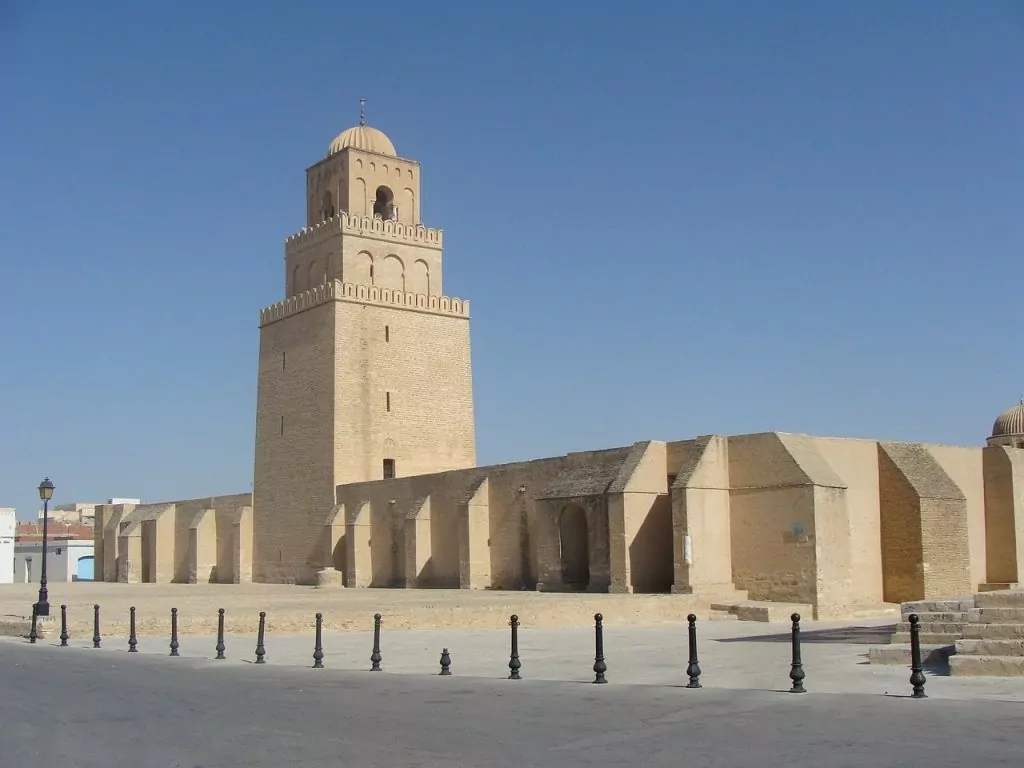
3. Many parts of the Star Wars films were filmed in Tunisia.
With the exception of 'Episode V: The Empire Strikes Back', the Star Wars films have used parts of Tunisia for filming. Scenes have been shot in Djerba, among other places, Matmata, Tataouine and Medenine, and several filming locations can be visited.
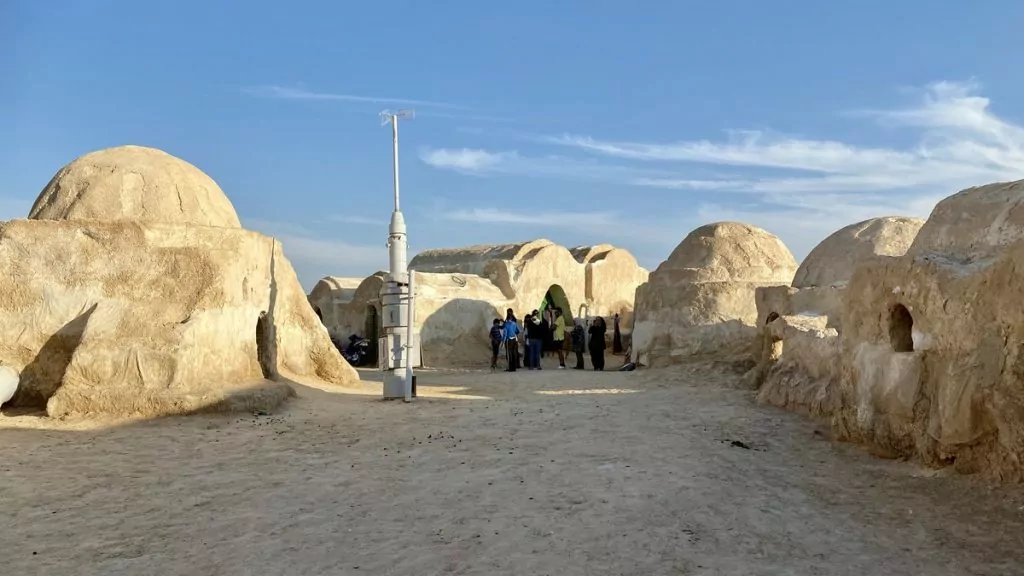
4. The Bardo Museum is Tunisia's largest museum
The Bardo Museum in Tunis is the largest museum in Tunisia, and one of the largest in Africa. Housing an impressive collection of archaeological artefacts, the museum is located in the former palace of Tunisia's ruler, adding an extra dimension of historical and cultural significance.
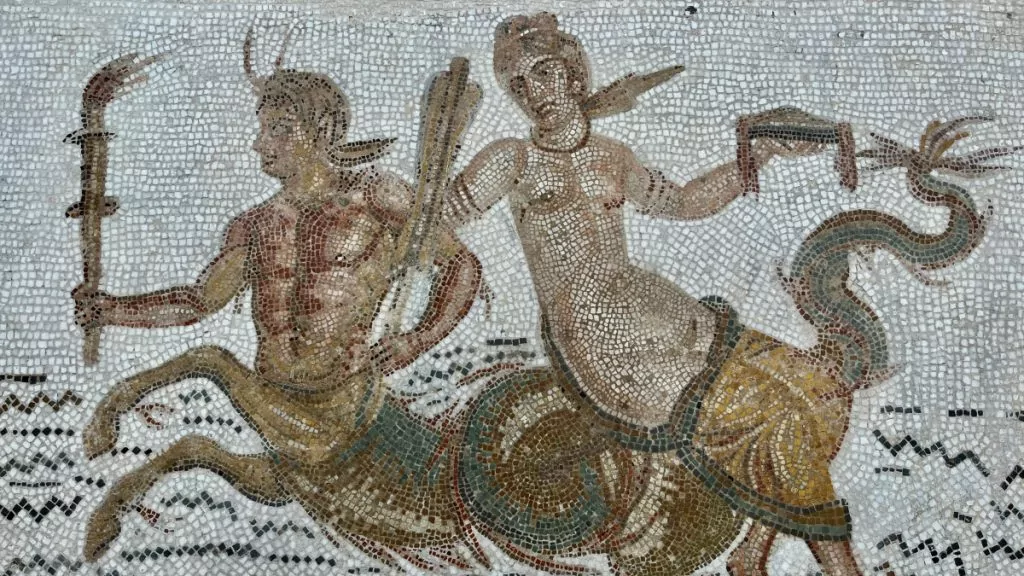
5. About 2/3 of the country's land is used for agriculture
In total, 65% of Tunisia's land was used for agriculture in 2016. The country's main agricultural export is olive oil, which is mainly exported to Europe. Agriculture accounts for slightly less than 13% of Tunisia's GDP. Other important exports include dates, potatoes, grapes, figs, tomatoes and citrus fruits.
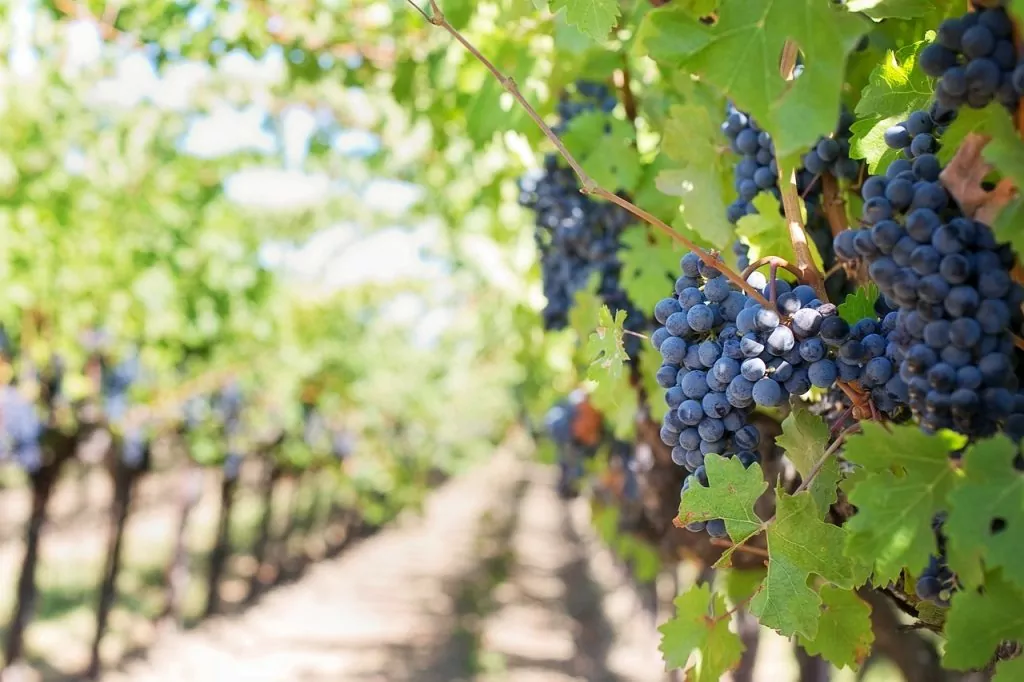
6. Tunisia invests in education
According to UNESCO, Tunisia spent about 6.2 per cent of its gross domestic product (GDP) on education in 2010. Education is a high priority in the country, and these efforts have resulted in clear improvements, as reflected in intergenerational literacy rates.
The younger generation, aged 16-25, has a literacy rate of 96.1 per cent. In comparison, the older generation, aged 65 and over, has a literacy rate of 39.8 per cent.

7. Tunisia's national flower is not from Tunisia
Jasmine is the national flower of Tunisia, although it is not originally from Tunisia but was brought by the Andalusians in the 16th century. The foreign media coined the name of the 2011 Tunisian revolution, the Jasmine Revolution, after Tunisia's national flower.
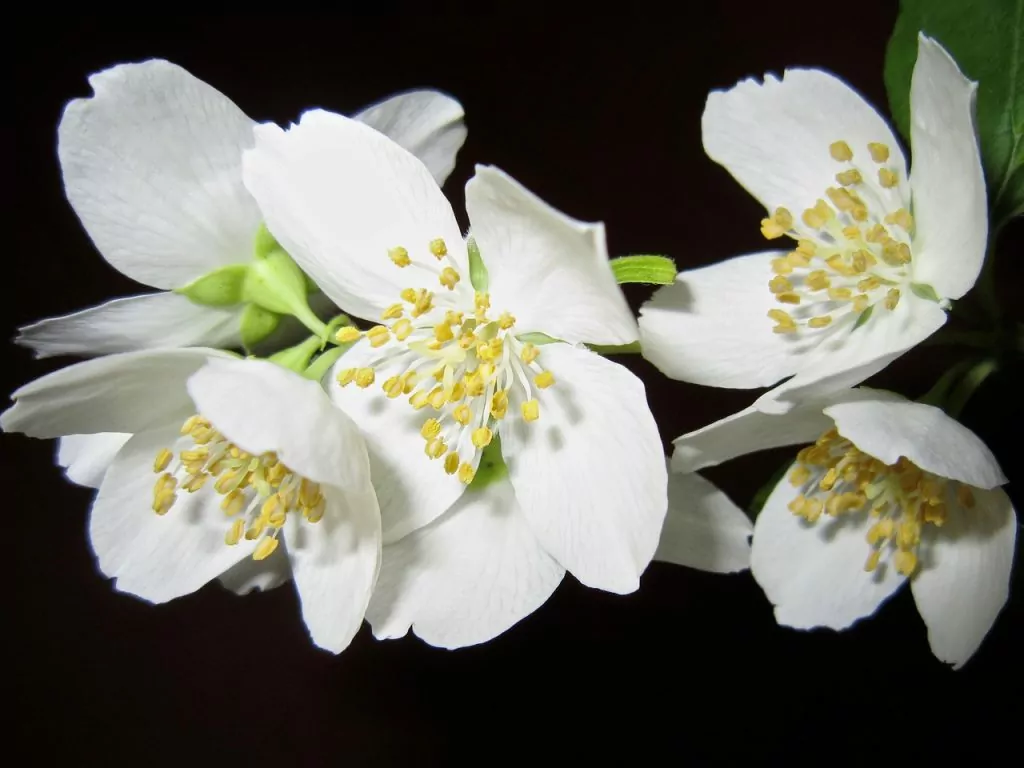
8. An Egyptian wrote Tunisia's national anthem in the 1930s.
Tunisia's national anthem, 'Humat al Hima' or 'Defender of the Homeland', has an interesting history. The song was originally written by an Egyptian author. At that time, the song consisted of only one verse. But in 1957, when it was officially adopted as Tunisia's national anthem, a Tunisian poet named Aboul-Qacem Echebbi contributed two more verses.
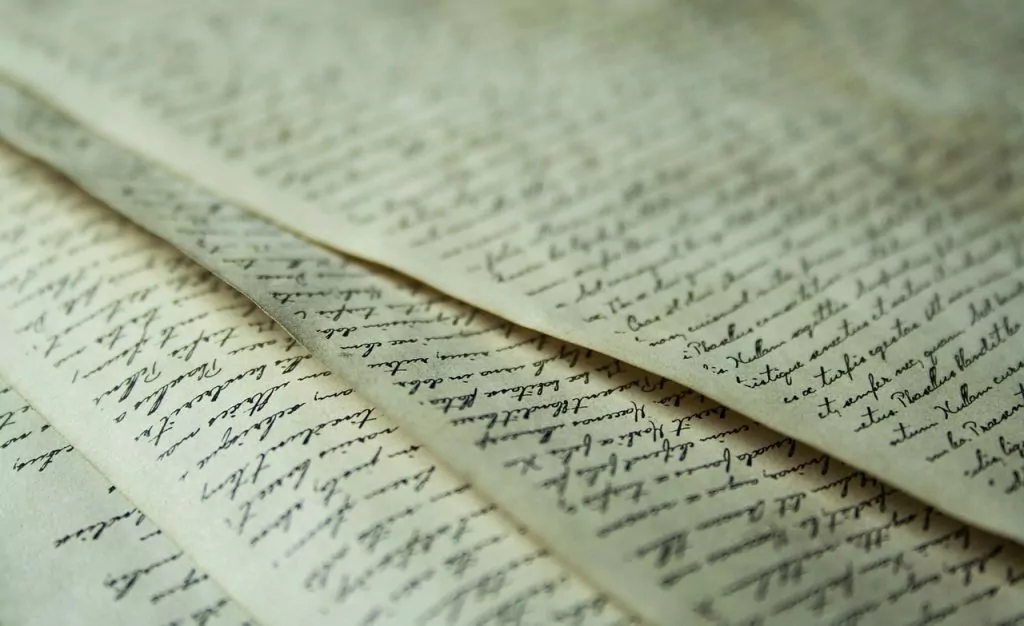
9. The ruins of Carthage are in Tunisia
In ancient times Carthage was one of the most powerful and prominent empires in the world, and it is estimated that at least 700,000 people lived here. Ultimately, Carthage was destroyed by the Roman Empire during the Punic Wars in 146 BC. Today you can visit the ruins of Carthage, just outside Tunisia's capital Tunis.
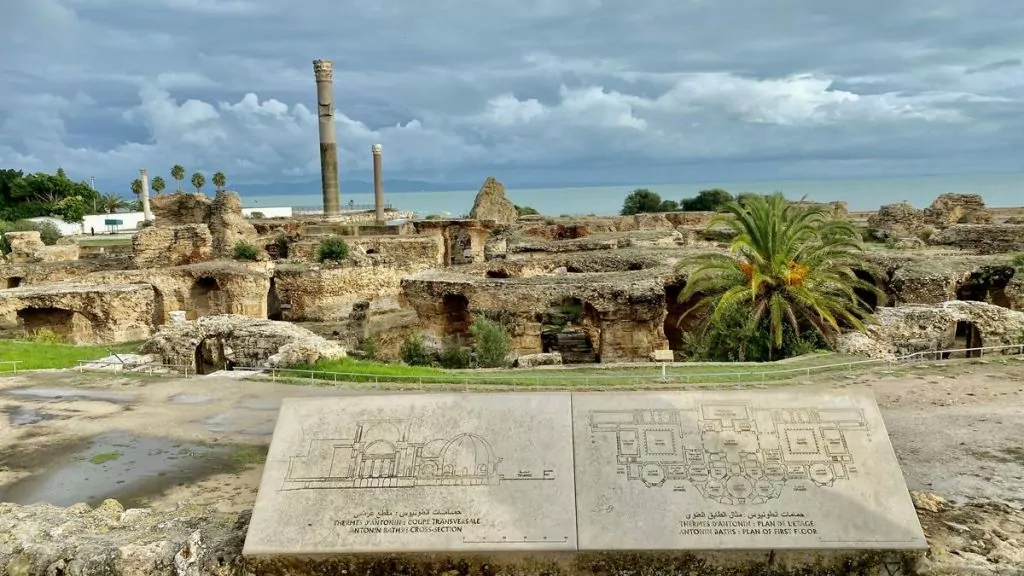
10. Tunisia gained independence in 1956
France took over the region of Tunisia in 1881 and Tunisia gained independence from France on 20 March 1956. Tunisian independence was led by Habib Bourguiba through the separatist movement.
Tunisia's national day is celebrated on 20 March. However, 25 July is Republic Day in Tunisia, as the country became a republic on that date in 1957.
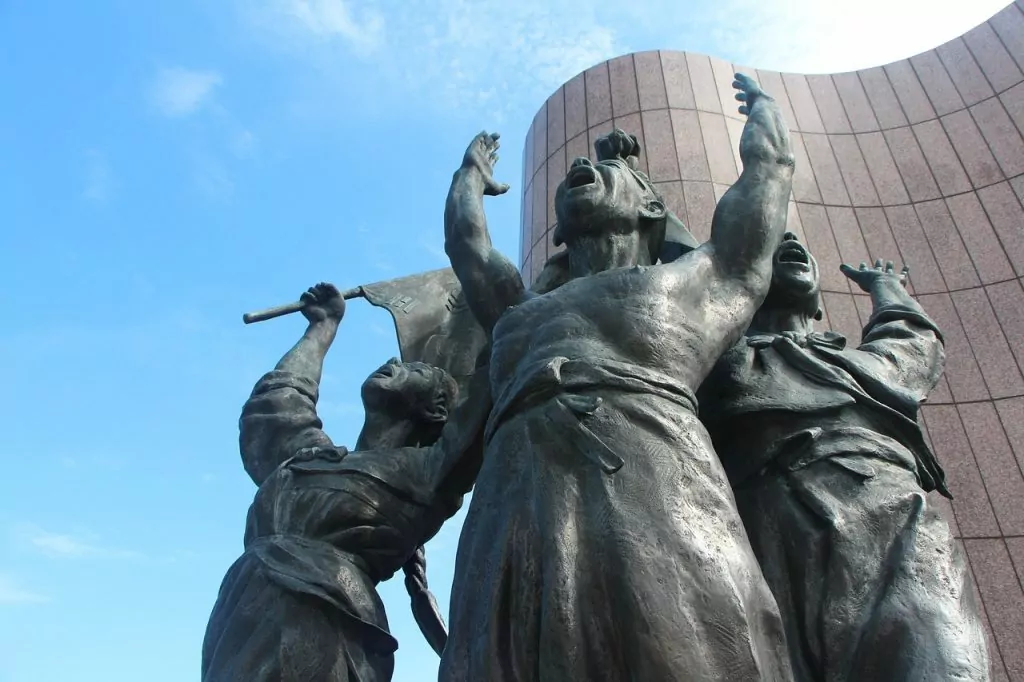

11. The Arab Spring started in Tunisia
The Arab Spring, which shook North Africa and some parts of the Middle East between 2010 and 2012, began in Tunisia and was a revolution against the government due to corruption and economic stagnation.
After the revolution started in Tunisia, it spread widely across Libya, Egypt, Yemen, Syria and other countries. It led to many uprisings, with large street demonstrations in some countries.
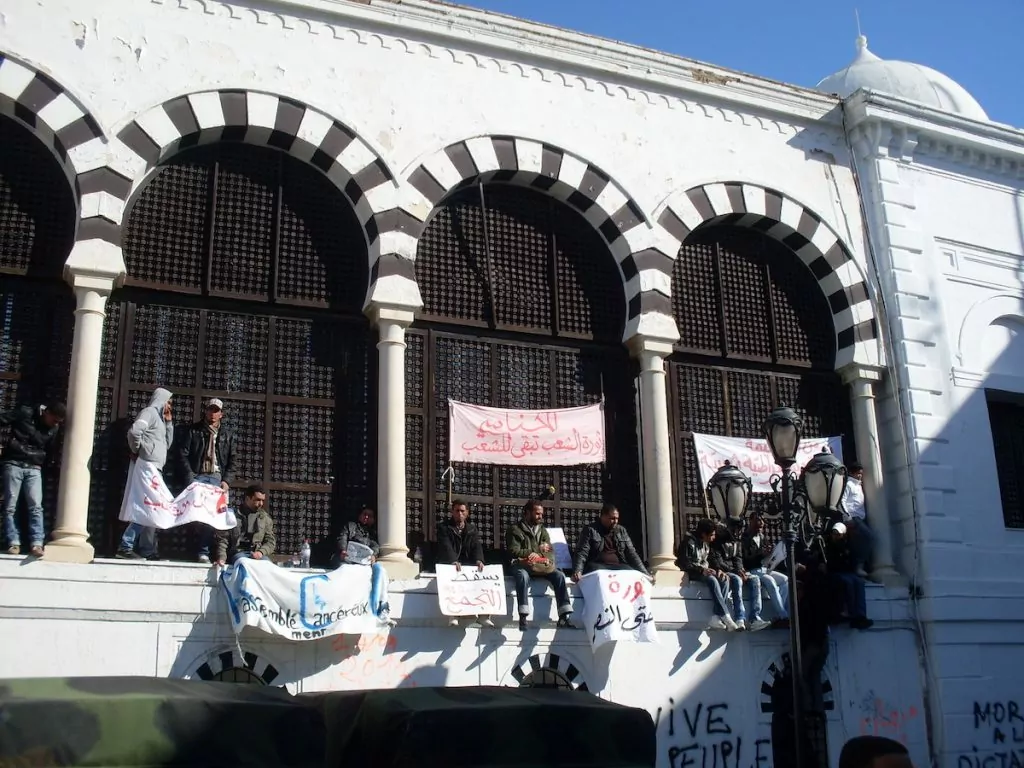
12. Tunisia has 17 national parks
Tunisia is one of Africa's top 5 countries with the most national parks. The country has 17 national parks with a variety of wildlife.
- Chambi National Park with the highest mountain
- Ichkeul with all migratory birds
- Bou-Hedma National Park
- Boukornine National Park
- El Feidja National Park
- Jebel Chitana-Cap Negro national park
- Jebel Serj National Park
- Jebil National Park, the largest and part of the Sahara Desert.
- Zembra and Zembretta National Park are two islands in the Gulf of Tunisia.
- Sidi Toui National Park
- Dghoumés National Park
- Jebel Mghilla National Park
- Jebel Orbata National Park
- Jebel Zaghouan National Park
- Jebel Zaghdoud National Park
- Qued Zen National Park
- Senghar-Jabess National Park
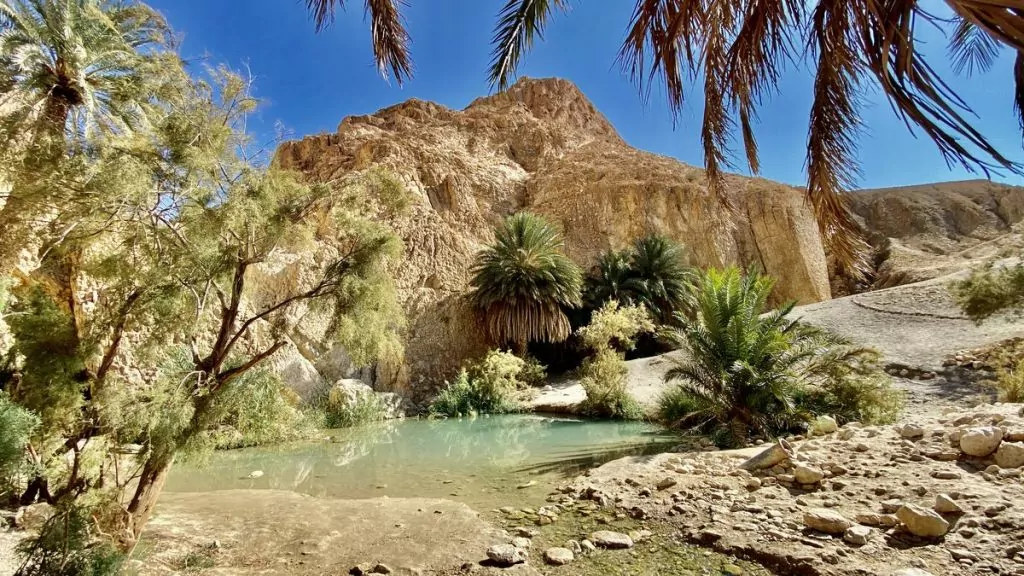
13. the El DJem amphitheatre is a Unesco heritage site.
Amphitheatre in El Djem is one of the largest Roman amphitheatres in the world. Only slightly smaller than the famous Colosseum in Rome, it has been a UNESCO World Heritage Site since 1979.
Interestingly, the town around the theatre is small, with low houses, meaning you can see this iconic landmark from many kilometres away. The Roman amphitheatre in El Djem was built in 238 AD, when Tunisia was under Roman rule. Its impressive area of 149 by 122 metres can accommodate up to 35,000 spectators.
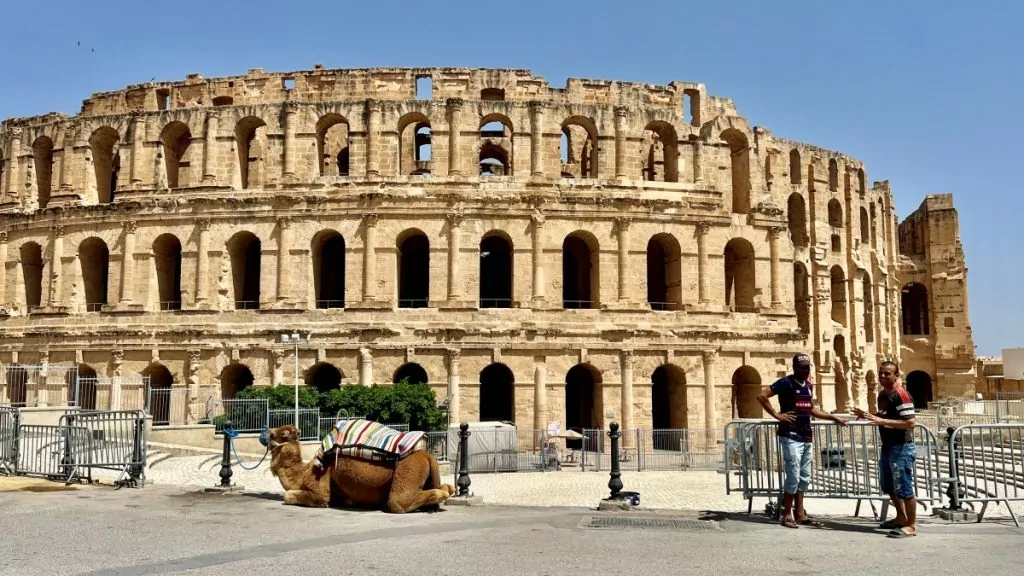
15. Tunisia was the first Arab country to ban polygamy
According to the Koran, a Muslim man is allowed to marry up to four women if he treats them equally. Despite this, polygamy has become increasingly rare in the world, and even unauthorised in many countries. Tunisia was the first Arab country to ban polygamy, back in 1956, the year of its independence.
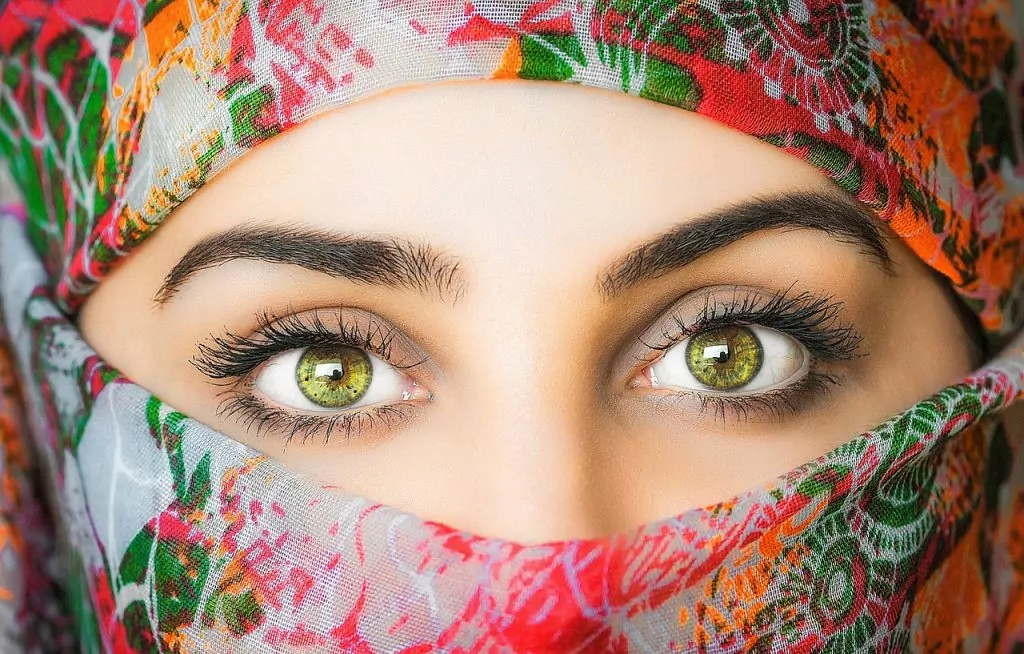
16. Tunisia's national dish is couscous
The national dish in Tunisia is couscous (kosksi), while there are of course many other delicacies. Tunisian cuisine is a wonderful blend of North African and Mediterranean flavours. You can experience fish and seafood, but also meat, vegetables, olive oil and many different spices.
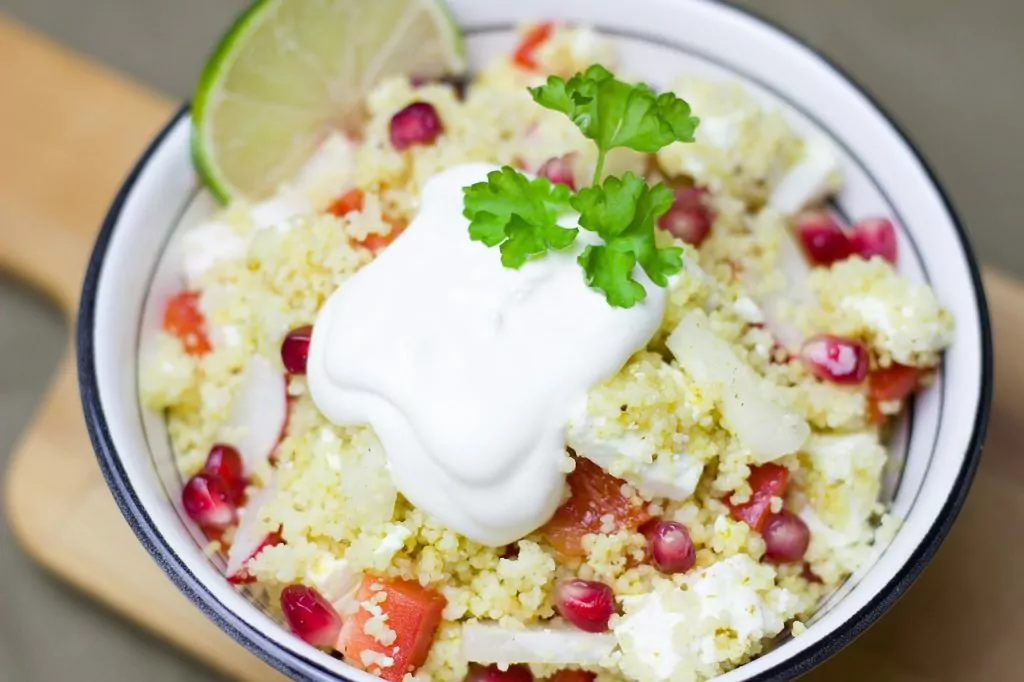
17. There are underground houses in Tunisia
Matmata is a Tunisian city that houses the Berber-speaking people. In the past, underground dwellings were constructed to protect residents from the intense heat and sun of the Sahara desert. Despite modernisation and the fact that most Tunisians now build their homes above ground, Matmata has preserved the tradition of underground housing.
These unique homes are created by digging large pits in the ground, the walls of which are then bent to form houses. Each pit has space for 5-9 families to live in.
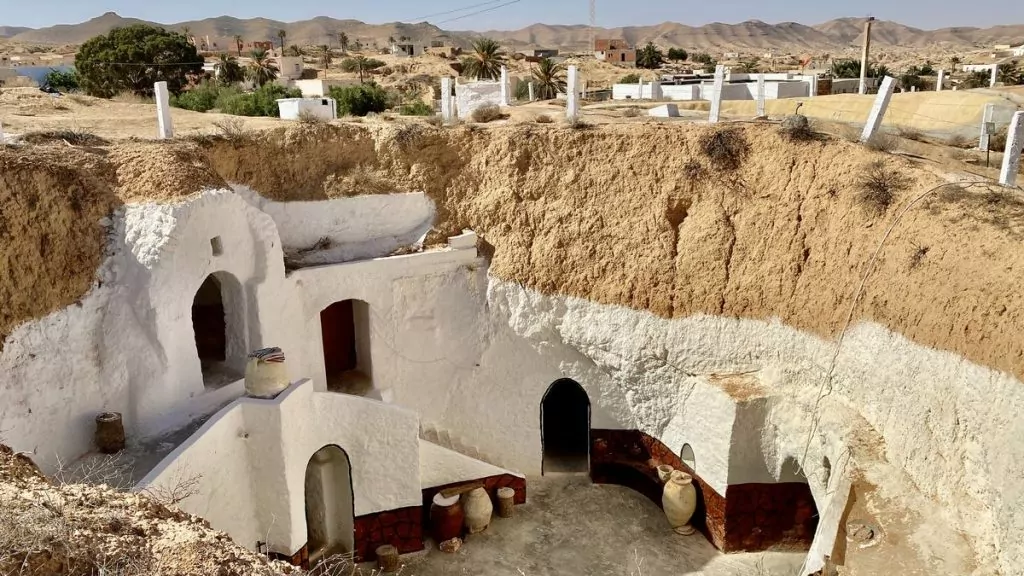
18. The world's largest desert can be visited in Tunisia
The Sahara is a vast desert located in North Africa, covering parts of Algeria, Chad, Egypt, Libya, Mali, Mauritania, Morocco, Niger, Sudan, Tunisia and Western Sahara. The Sahara is the world's largest hot desert, with summer temperatures that can rise above 50°C. At night, the temperature can drop to -5°C.
Sunrise and sunset are very beautiful as there are no buildings to block your view. You can watch stars as it is completely pitch black, driving a quad bike, camping in the desert, sand surfing or ride on a dromedary. One of the unusual sights in Tunisia is the desert rose. This "flower" is formed from salt and sand, and it is often used to decorate aquariums and homes.
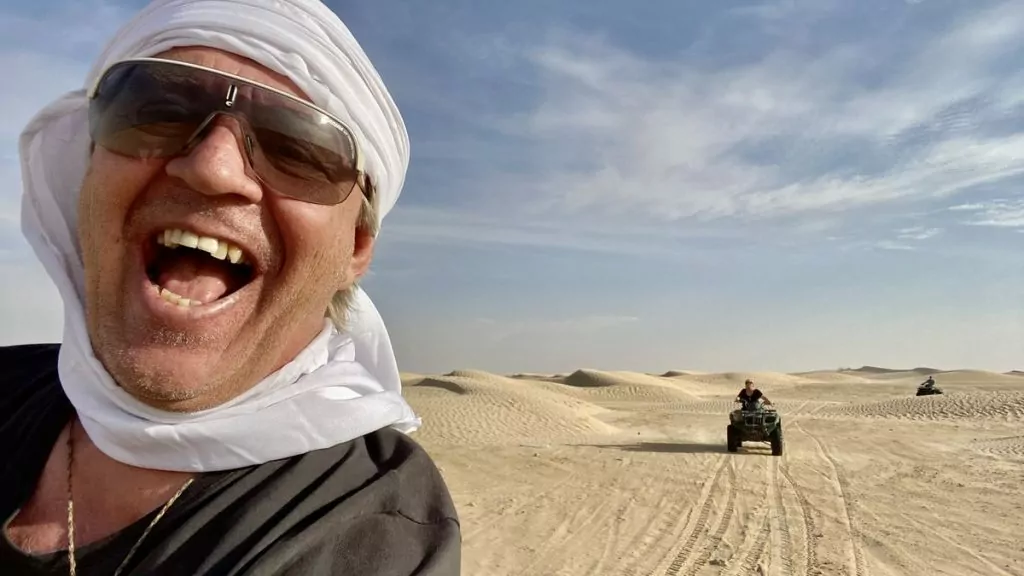
19. Tunis has many historical sites
There are many important historical sites in Tunisia's capital, Tunis. These include the Al-Zaytunah mosque and the remains of the ancient city of Carthage.
The Medina of Tunis, the old city centre of Tunis, was inscribed on Tunisia's World Heritage List in 1979. This historic medina boasts no less than 700 monuments, including mosques, palaces, mausoleums and fountains. These monuments include the magnificent houses of Dar Lasram and Dar Hussein and the well-known Zitouna and Kasbah mosques.
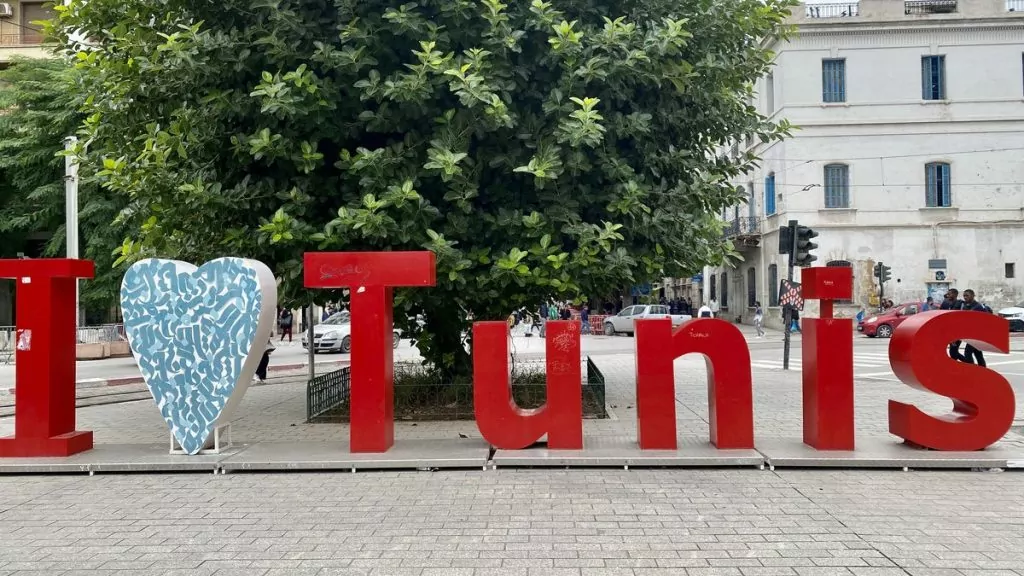
20. Tunisia has 8 UNESCO World Heritage Sites
There are a total of eight UNESCO World Heritage Sites in Tunisia, seven of which are cultural and one natural.
- Amphitheatre in El Djem
- The old town of Dougga
- The ancient city of Carthage, founded in 814 BC.
- City of Kairouan from 670 AD
- Kerkuan is a Phoenician city
- Sousse and the medina (fort) and old town
- Tunis and the Medina
- Ichkeul is a lake with wetlands in northern Tunisia.
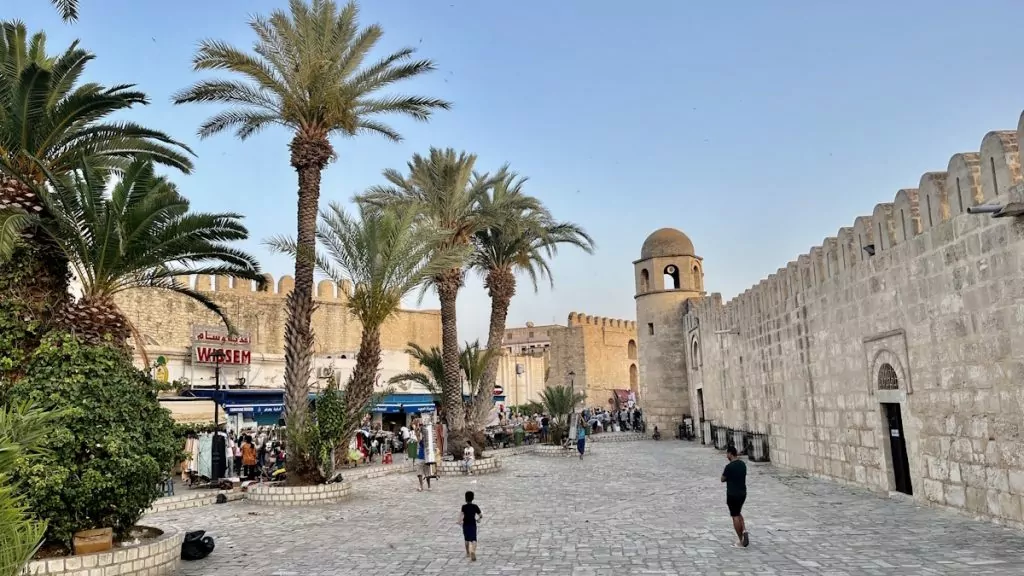

21. El Ghriba is the oldest synagogue in Africa.
On the island Djerba is the oldest synagogue in Africa. The El Ghriba Synagogue, built on the site of a Jewish temple over 2000 years ago, is one of the most popular destinations for the holy holiday of Lag B'Omer. Every year in May, Jewish worshippers around the world embark on a pilgrimage to El Ghriba as part of the holiday.
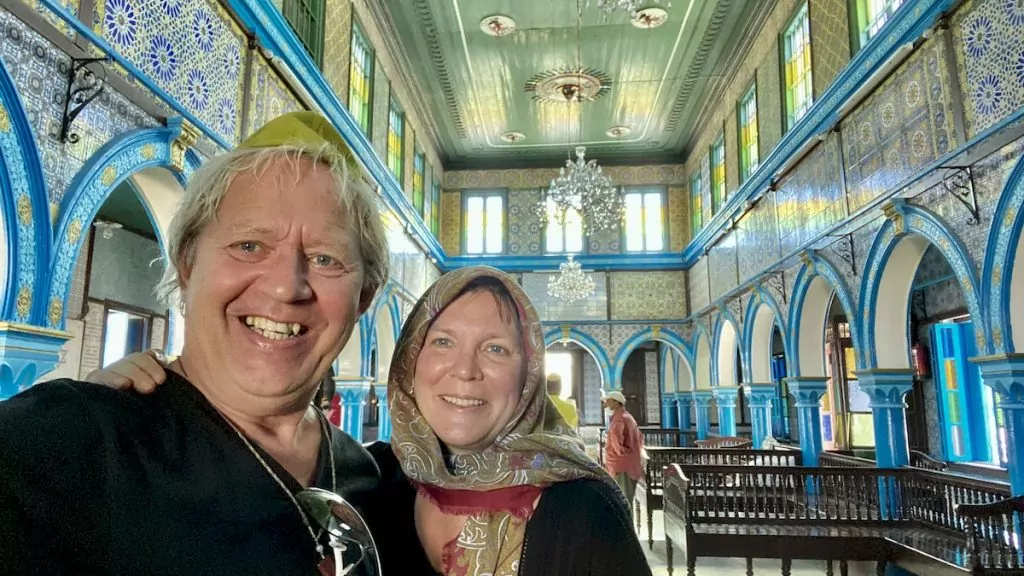
22. One of Tunisia's main exports is dates.
Tunisia is one of the world's largest producers and exporters of dates. Only one palm grows in Tunisia - the date palm. Most date palms grow around the areas of Kébili, Tozeur and Gabès where the climate is suitable for palm trees to produce good dates. The most popular variety is called 'Fingers of Light'.
Dates is a very versatile fruit. There are lots of products derived directly from dates: honey, vinegar, syrups, oils and powders. Dates are very rich in minerals and vitamins and this makes them very beneficial for health.
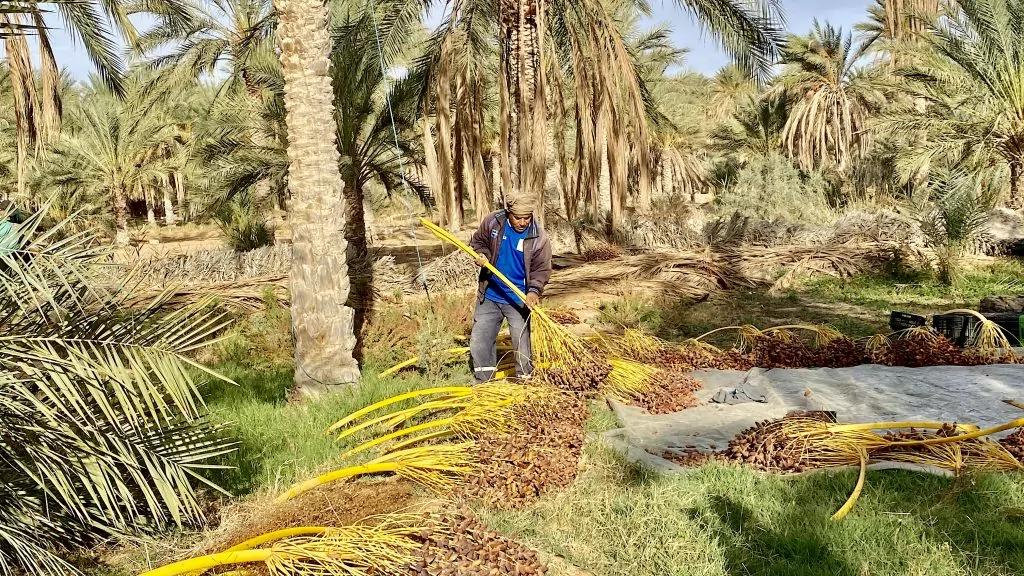
23. Tunisia is one of the most popular countries in Africa.
Tourism in Tunisia attracts over 10 million visitors annually, making it one of the most visited countries in Africa. The country is also a very popular destination on the Mediterranean Sea.
The majority of tourists go to the big cities and attractions, such as Tunis, Carthage, Sousse... , Tuscany, Hammamet and Djerba. So what attracts so many tourists to Tunisia? The answer is simple: culture, food, history, beaches and the Sahara.
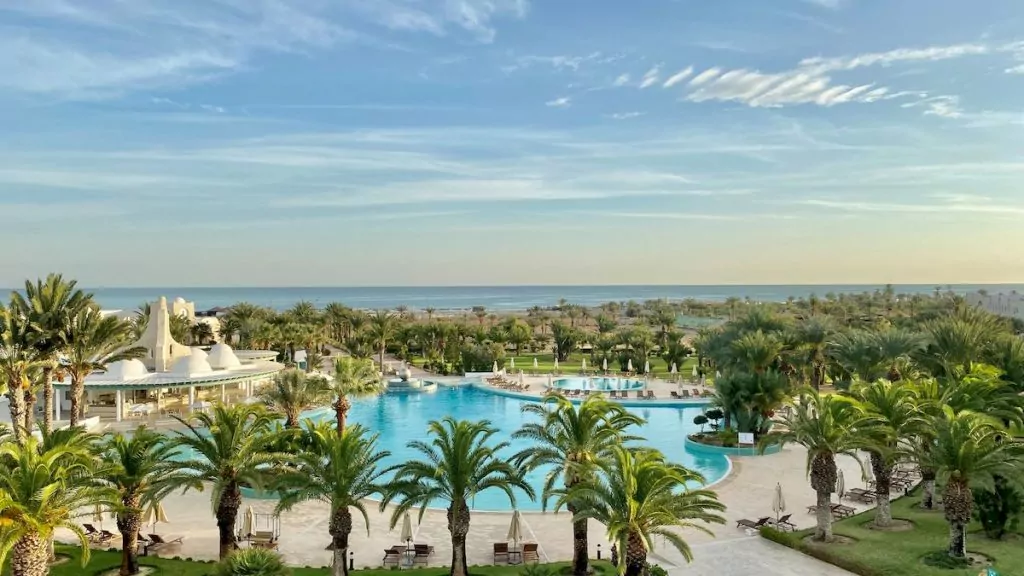
24. whereas Tunisia is one of the largest exporters of olive oil in the world
Tunisia is known for its high-quality olive oil, and olive oil exports are an important part of the country's economy. In fact, Tunisia is one of the world's largest exporters of olive oil, along with other Mediterranean countries, with Spain being by far the largest exporter.
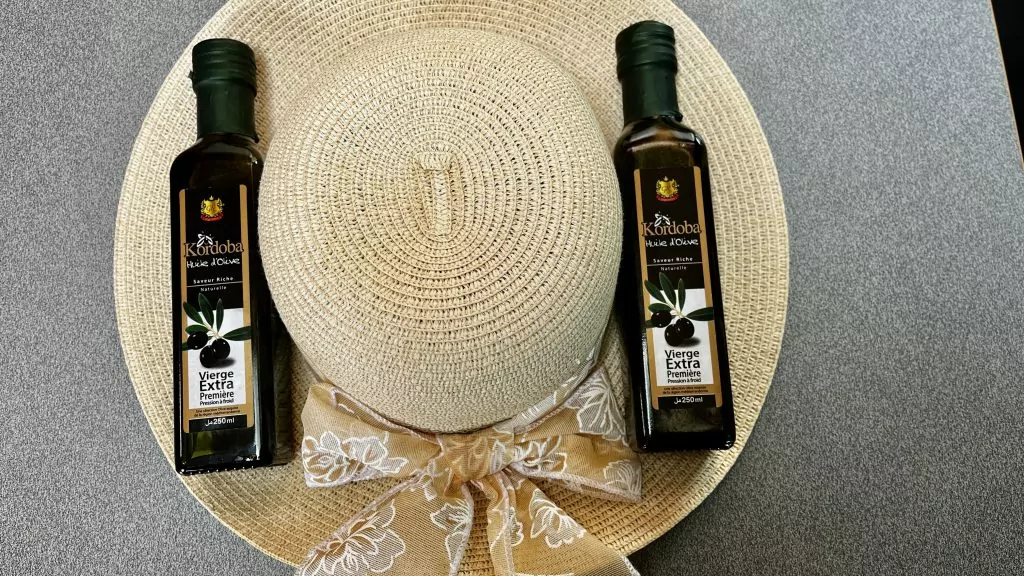
25. Djerbahood offers fantastic street art.
In the village of Erridh, in the Jewish quarters of the island of Djerba, there is the "Djerbahood". The neighbourhood is beautiful with its white houses, blue gates, colourful flowers and nice little shops. But what really stands out is the amazing street art created by over 150 artists from 30 different countries. This art project started in 2014 and since then the neighbourhood has been developing with more and more impressive paintings.
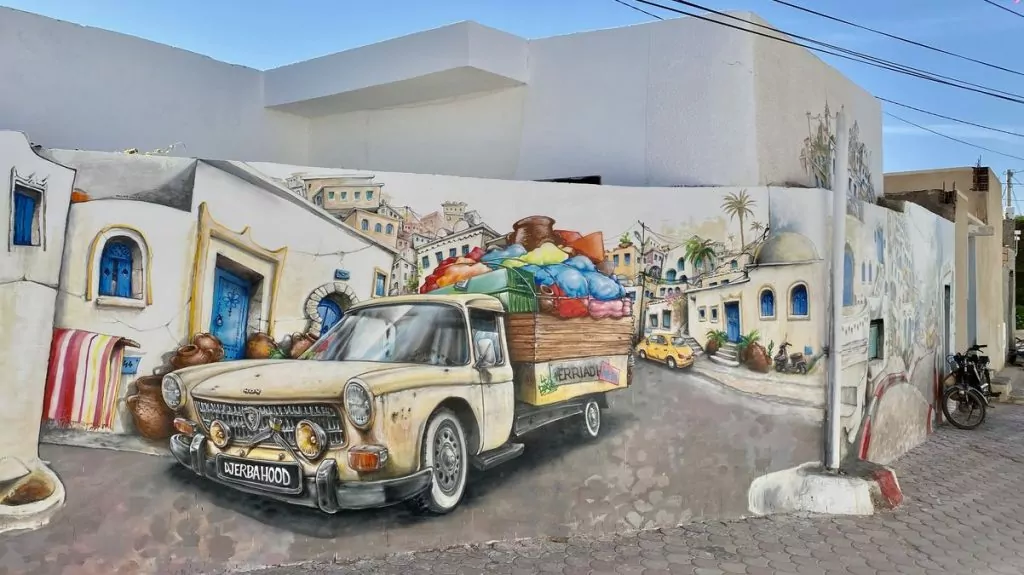
26. Shakshuka and Harrisa come from Tunisia
Shakshuka is a very popular dish made from gently poached eggs in a delicious chunky tomato and paprika sauce. Popular in many parts of North Africa and the Middle East, this dish is thought to have originated in Tunisia.
Harrissa can also be said to come from Tunisia, or at least from North Africa. Tunisians really love spicy food and they like to put their famous chilli pepper paste, Harrisa, on most things, except maybe on desserts.
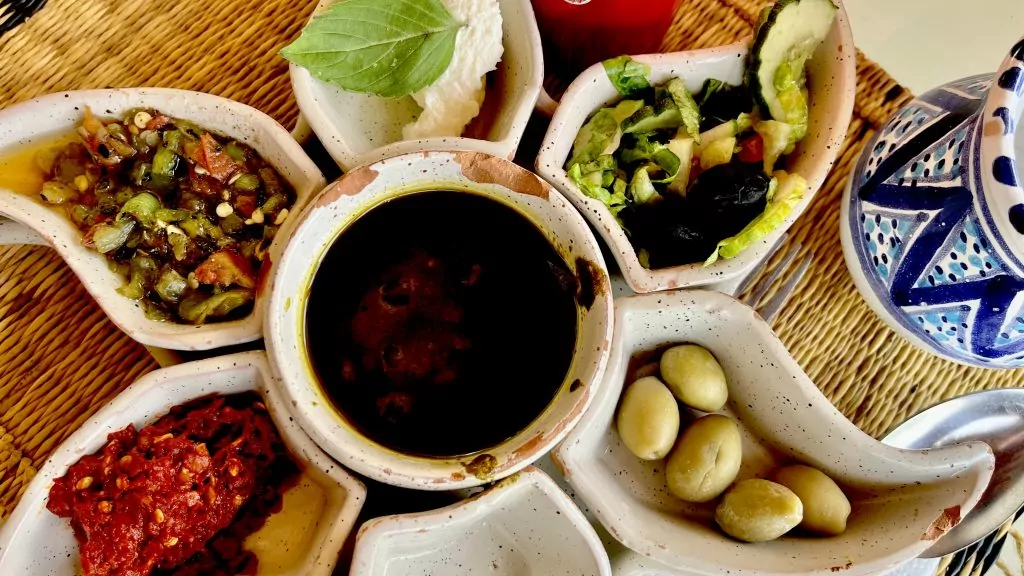
27. Sidi Bou Said is a blue and white city
In the Tunisian city of Sidi Bou Said all houses are white and blue, and it is forbidden to repaint them so as not to spoil its historical appearance. The charming town, which attracts many tourists, is filled with shops, restaurants and hotels.
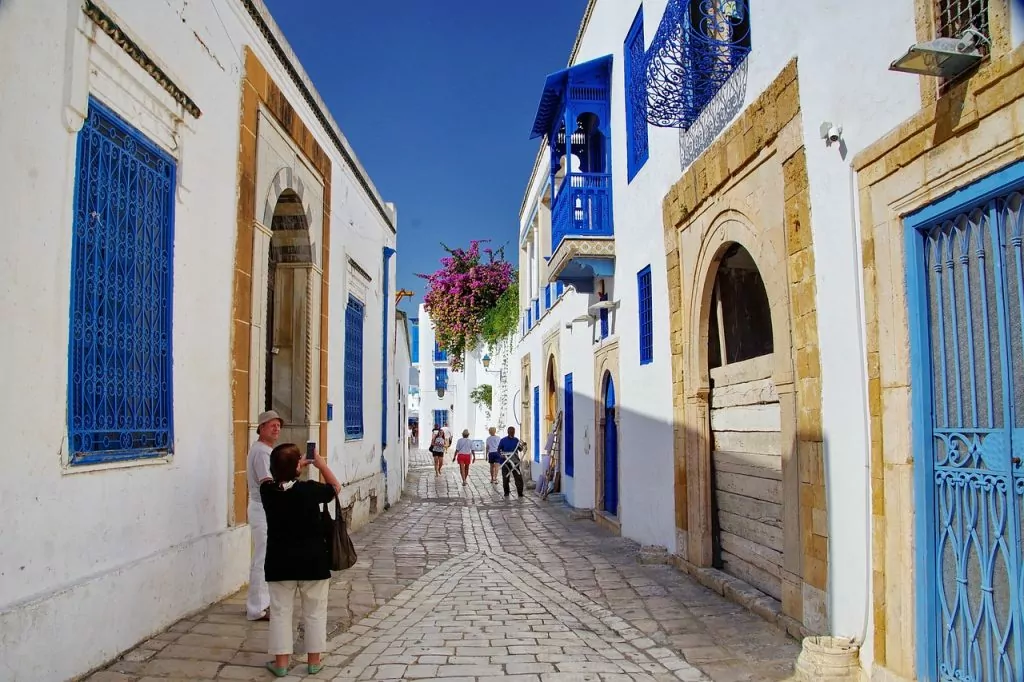
29. Tunis has the "Tunis Light Metro".
Tunisia's capital, Tunis, is home to the 'Tunis Light Metro' tramway system. It runs mainly above ground but at key junctions the system goes underground to avoid congestion. The Tunis Light Metro has six lines:
- Line 1: Barcelona Square - Ben Arous
- Line 2: Republic Square - L ' Ariana
- Line 3: Tunis Marine - Ibn Khaldoun
- Line 4: Barcelona Square - Kheieddine
- Line 5: Barcelona Square - Intiaka
- Line 6: Tunis Marine - El Mourouj
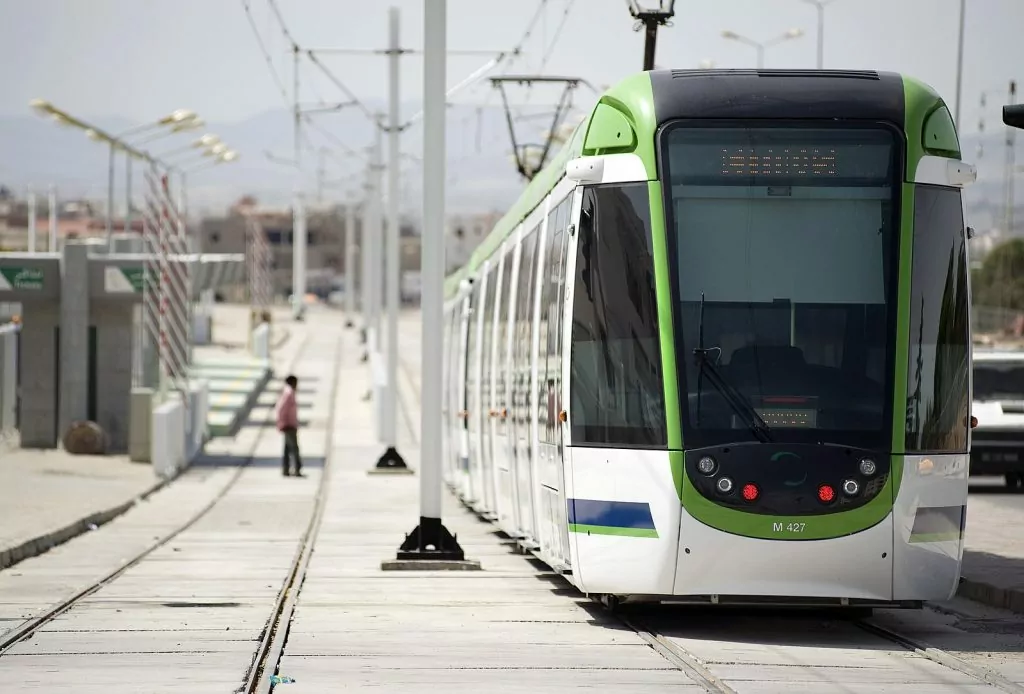
30. The flag of Tunisia is a symbol
The flag of Tunisia is bicoloured in red and white. The background is red, while it has a white disc with an image of a red crescent and star in the centre. The red colour stands for the sacrifices made for one's country and represents the blood of the martyrs. The white colour symbolises peace. The five-pointed star represents the five pillars of Islam. The crescent is a traditional symbol of Islam.
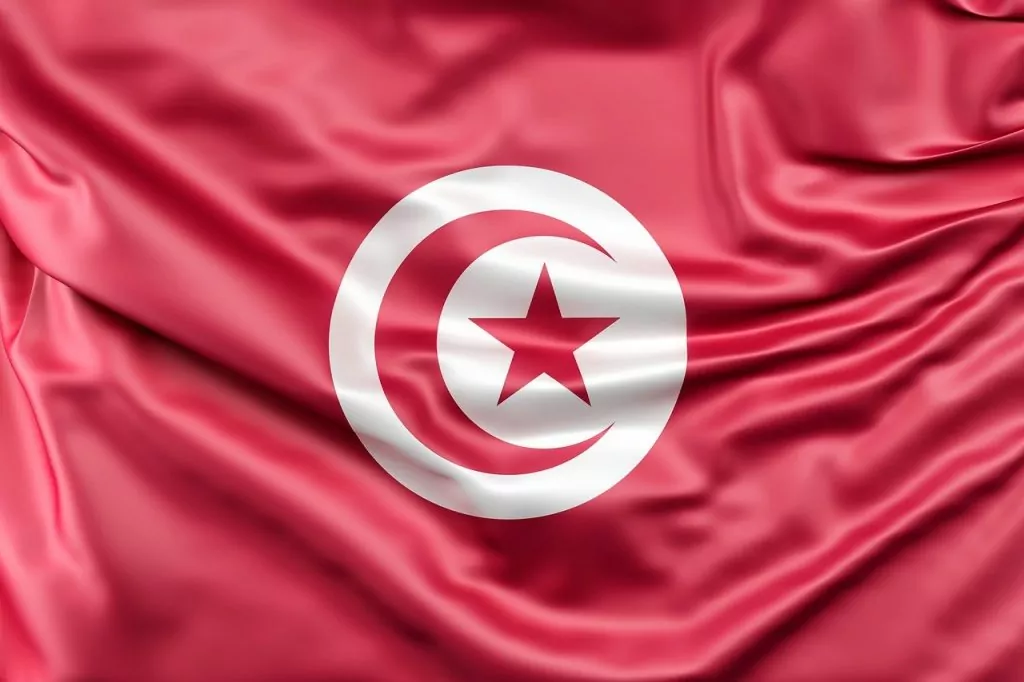
Facts about Tunisia
- Capital city: Tunis with 2.7 million inhabitants and surrounding areas (2020)
- Population: Around 12.5 million (2021)
- Language: Arabic (Tunisian dialect). French is also an important language, and Berber is spoken by a minority.
- Statehood: Republic
- Second largest city: Sfax with 330,000 people
- Religion: Islam is the main religion
- National Day: 20 March
- Time difference: + 1 hour
- Currency: Tunisian Dinar
- Country code: 216
- Emergency number: 112
More interesting facts about Tunisia
- Biggest lake: Chott el Djerid
- Highest pointThe highest point in Tunisia is Jebel ech Chambi, which reaches 1,544 metres above sea level.
- Longest river: Medjerba 450 km
- Northernmost point: Cape Angela in Tunisia is the northernmost point on the African continent.
- Main sportsFootball is loved by Tunisians. The Eagles of Carthage have qualified for the FIFA World Cup six times, including the most recent in 2022. As hosts, they also won the AFCON (African Cup of Nations) once in 2004.
- The national flower of Tunisia: Jasmine
- Tunisia's national anthem: Humat al-hima
- The patron saint of Tunisia: Cyprian
Surprising facts about Tunisia
Were these perhaps some surprising facts about Tunisia, or did you already know everything? Do you have any more exciting facts about Tunisia to share?

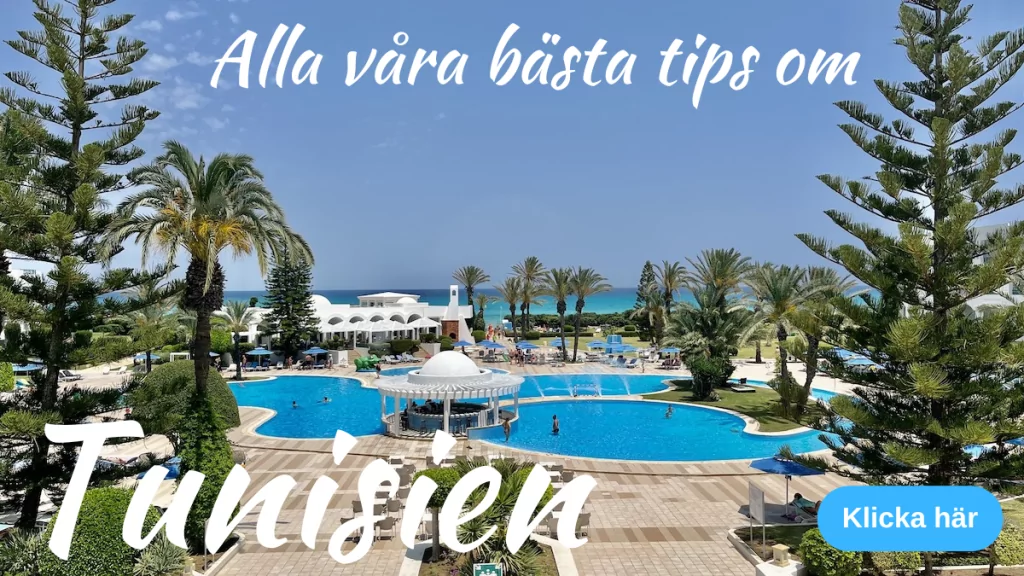
Historical facts about Tunisia
Tunisia has a rich history dating back several thousand years. The country has been inhabited since prehistoric times and has been influenced by various civilisations, including Phoenicians, Romans, Vandals, Byzantines and Arabs.
In ancient times, Carthage was an important Phoenician and later Roman city. Tunisia later became part of the Muslim Caliphate and was influenced by Arab culture and Islamic rule.
During the Middle Ages, Tunisia was part of various Muslim dynasties. In the 16th century, Tunisia was conquered by the Ottoman Empire and became an Ottoman province. In the 19th century, Tunisia became a protectorate of France.
Tunisia played an important role in the Tunisian nationalist movement in the 20th century, with leaders such as Habib Bourguiba. Tunisia gained independence from France in 1956 and became a republic with Mr Bourguiba as its first president.
In recent decades, Tunisia has undergone a process of democratisation following the 'Jasmine Revolution' of 2010-2011. Since then, the country has struggled with political challenges and socio-economic issues, but continues to strive for stability and progress.

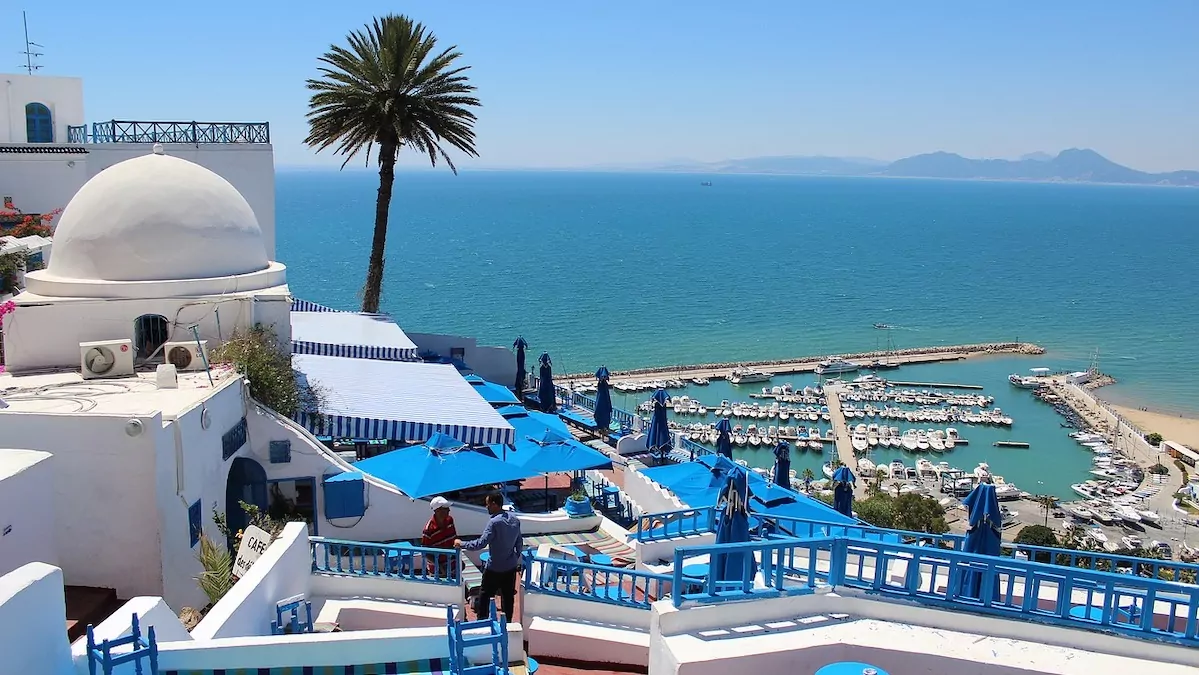







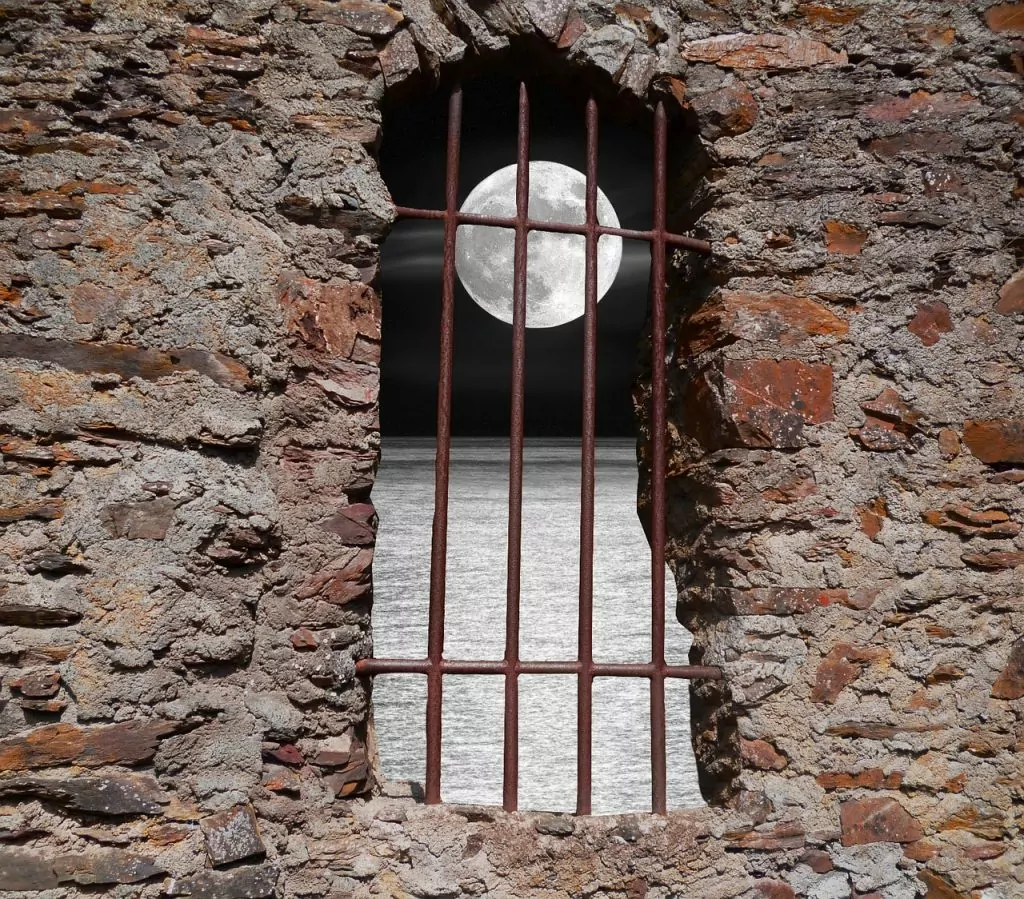
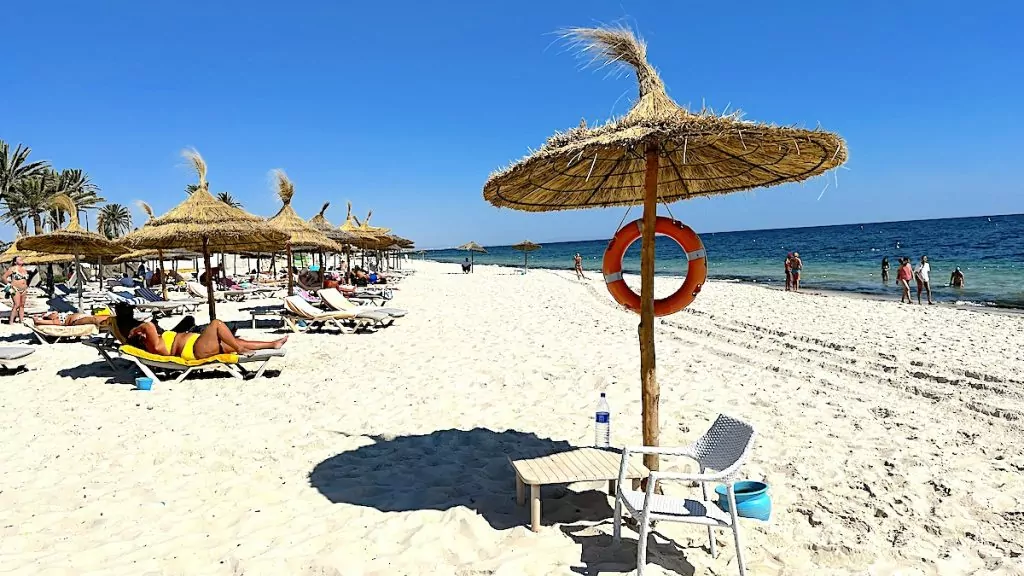
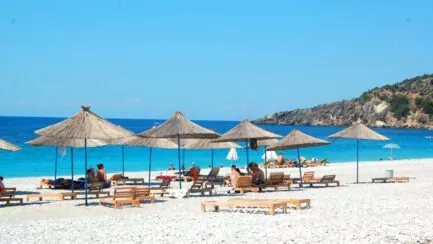
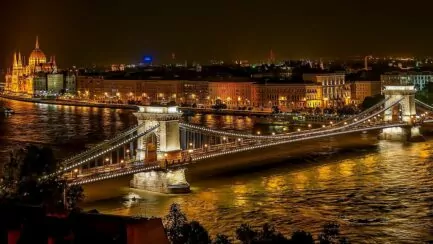
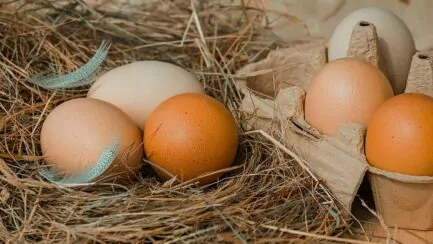
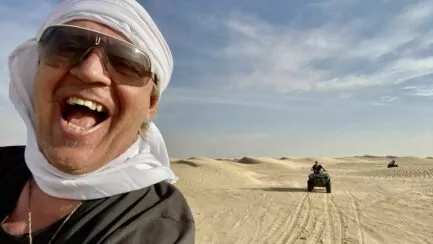
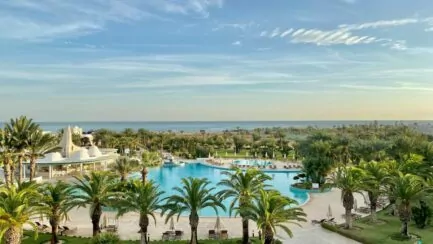
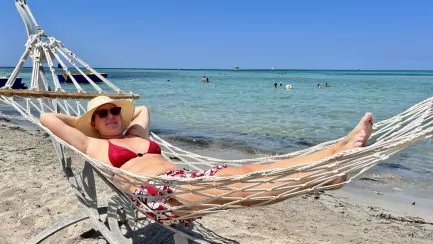



Lena i Wales och lite överallt says:
A lot of interesting facts and a lot I didn't know at all.
Happy First Advent!
01 December 2023 - 16:22